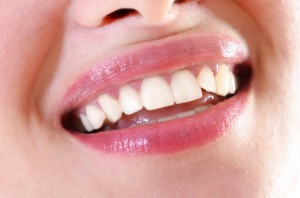Choosing the Right Material for Veneers
Our dentists help you select the veneers that will best achieve your goals

Feldspathic porcelain veneers are created by hand by artisans who paint thin layers of porcelain onto a model, baking it after every layer until the desired shape, thickness, and color is achieved. Pressed ceramic porcelain veneers are created by injecting a molten Lucite-based porcelain material into a mold. The mold is then subjected to constant pressure as it cools, resulting in a very dense and uniform material.
You can rely on California Dental Group to help you choose the material that is best for your unique needs based on the following four factors.
Damage Resistance
Because they are made all in one piece rather than layer by layer, pressed ceramic porcelain veneers can be up to two times stronger than feldspathic porcelain veneers. This makes them a better choice for restorations where the veneers might be at risk of breakage due to flexure, shear, or tensile stresses. Because pressed ceramic veneers are actually less abrasive than feldspathic materials, they also reduce the risk of damage to the enamel of surrounding teeth due to wear from chewing or grinding.
Aesthetics
Both types of veneers can deliver a beautiful, natural-looking appearance. However, feldspathic porcelain veneers are often thinner and more translucent than their pressed ceramic counterparts. In some cases, this is a big disadvantage because it allows the color of the natural tooth to affect the color of the veneer. In cases where teeth are already severely stained or at risk of turning gray, the veneer needs to cover the existing tooth more completely. In this case pressed ceramic porcelain veneers can deliver a better aesthetic result, provided at least 0.8mm of space is available to accommodate the increased thickness of this type of veneer.
Reliability
Because of the way they are made, pressed ceramic veneers typically conform to the shape of the natural tooth better than feldspathic ceramic veneers, which are subject to minute amounts of warping and shrinkage at every firing. The better the fit, the thinner the layer of cement bonding the veneer to the tooth will need to be. This results in a stronger bond and a more reliable veneer.
Prep Work
Pressed ceramic porcelain veneers require more of the existing tooth surface to be removed. This can be a concern for patients who either do not wish to have this procedure done or have pre-existing loss of enamel or dentin that does not allow for the safe removal of too much additional material.




